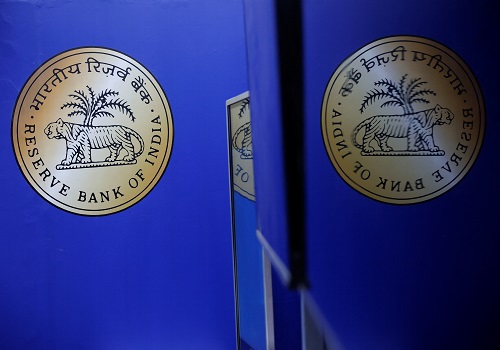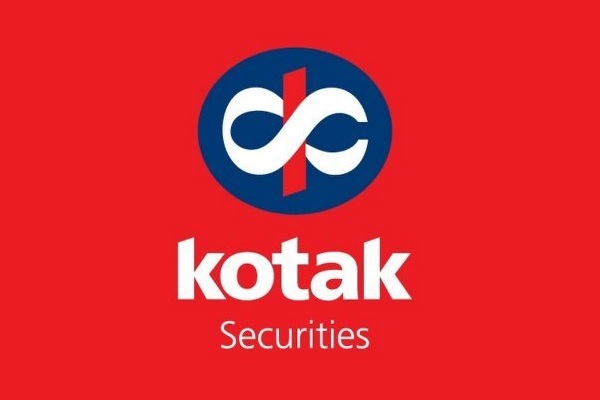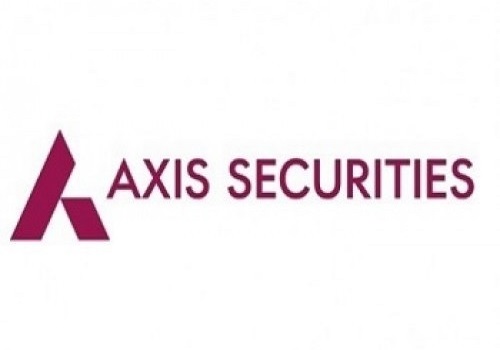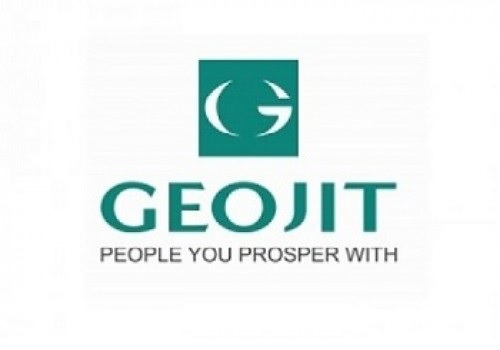Aluminium trading range for the day is 272.4-275 - Kedia Advisory

Gold
Gold prices surged 2.06% to settle at 1,26,465, driven by growing expectations of an imminent Federal Reserve rate cut as signs of a cooling U.S. labor market strengthened the case for monetary easing. Data showing U.S. companies shedding an average of 11,250 jobs per week through late October fueled speculation of a 25-basis-point rate cut next month, with traders pricing in around a 68% probability. The anticipated end of the prolonged U.S. government shutdown also added some stability to investor sentiment, though safe-haven demand remained supported. Globally, physical gold demand showed mixed trends. China’s consumption fell 7.95% year-on-year to 682.73 tonnes in the first three quarters of 2025, while domestic output rose 1.39% to 271.78 tonnes. In India, high and volatile prices subdued retail demand, prompting dealers to offer discounts of up to $14 per ounce. Meanwhile, China’s new policy reducing tax exemptions for gold retailers to 6% weighed on buying interest. Regionally, premiums ranged between $1.5 and $3.5 across Singapore and Hong Kong, while Japanese demand remained weak. According to the World Gold Council, global gold demand climbed 3% year-on-year to 1,313 tonnes in Q3 2025, the highest on record, driven by a 17% jump in bar and coin buying and a 134% rise in ETF inflows, offsetting a 23% fall in jewelry demand. Central banks increased purchases by 10% to 219.9 tonnes. The market witnessed short covering with open interest down 7.13% to 11,986. Support lies at 1,24,510 and 1,22,555, while resistance is at 1,27,560 and 1,28,655.
Trading Ideas:
* Gold trading range for the day is 122555-128655.
* Gold gains supported by growing expectations of an imminent Federal Reserve rate cut.
* Private data showed that US companies shed an average of 11,250 jobs per week in the four weeks ending October 25.
* Investors are also awaiting a wave of official data as the US government moves to end its longest-ever shutdown.
Silver
Silver prices jumped sharply by 4.79% to settle at 1,62,091, buoyed by renewed expectations of a near-term U.S. Federal Reserve rate cut following weak labor market data. ADP figures showed U.S. private employers shedding an average of 11,250 jobs per week through late October, reinforcing views that the Fed could lower rates in December. Market participants now assign a 68% probability to a 25-basis-point cut, up from 62% previously, while Fed Governor Stephen Miran’s call for a larger 50-basis-point reduction added further momentum to bullish sentiment. Additionally, optimism about the end of the record U.S. government shutdown supported risk appetite, lifting both gold and silver. On the physical front, silver inventories held in London vaults rose 6.8% to 26,255 metric tons, valued at $41.3 billion, according to the London Bullion Market Association. The inflow of 1,674 tons from the U.S. and China in October eased a tight liquidity situation, though borrowing costs for silver in London remain historically high. Meanwhile, 1,568 tons have exited Comex warehouses since early October, signaling continued logistical shifts in global supply chains. Investment demand also strengthened, with global silver ETP holdings rising to 1.13 billion ounces by mid-2025 — just 7% below the record levels seen in early 2021. The total value of these holdings surpassed $40 billion for the first time, reflecting robust investor interest. The market witnessed short covering as open interest dropped 16.98% to 13,630. Support lies at 1,57,125 and 1,52,160, while resistance is at 1,64,855 and 1,67,620.
Trading Ideas:
* Silver trading range for the day is 152160-167620.
* Silver rose as signs of US labor market weakness fueled expectations for a near-term Fed rate cut.
* Fed Governor Stephen Miran also called for a larger half-point reduction amid falling inflation and rising unemployment.
* Traders currently price in roughly a 68% chance of a 25 bps rate cut next month.
Crude oil
Crude oil prices declined sharply by 3.79% to settle at 5,198, pressured by renewed concerns of an oversupplied global market. The decline followed signals that OPEC+ members are gradually restoring production capacity while non-OPEC producers, particularly in the U.S. and Brazil, continue to ramp up output. These developments have raised fears of a widening supply glut. Adding to bearish sentiment, the International Energy Agency (IEA) projected in its latest World Energy Outlook that oil and gas demand could continue to grow until 2050 — a shift from its earlier view of a near-term demand peak — highlighting persistent dependence on hydrocarbons despite climate goals. In the U.S., crude inventories surged by 5.202 million barrels in the week ending October 31, the biggest weekly rise since late July and well above expectations of a 0.6-million-barrel increase. Stocks at Cushing, Oklahoma, climbed by 0.3 million barrels, while gasoline and distillate inventories fell by 4.73 million and 0.64 million barrels, respectively, reflecting strong refining activity. On the demand front, China’s crude oil imports rose 8.2% year-on-year in October to 48.36 million metric tons, or 11.4 million barrels per day — the highest refinery utilization rates of 2025 so far. Total imports for the first ten months increased 3.1% to 471 million tons, offering partial demand-side support. Crude oil remains under fresh selling pressure, with open interest rising 28.75% to 12,222. Support is seen at 5,123 and 5,049, while resistance is placed at 5,337 and 5,477.
Trading Ideas:
* Crudeoil trading range for the day is 5049-5477.
* Crude oil dropped pressured by expectations of a growing global supply surplus.
* OPEC report signals supply-demand balance next year amid output hikes
* In October, OPEC output rose slightly to 28.46 million barrels a day, led by Saudi Arabia, Iraq, and Kuwait
Natural gas
Natural gas prices slipped by 0.7% to settle at 398.1, weighed down by record-high output, comfortable storage levels, and forecasts for warmer-than-normal weather across key consuming regions through late November. U.S. production has remained robust, averaging 109 billion cubic feet per day (bcfd) so far this month, providing ample supply to balance rising export activity. The U.S. Energy Information Administration (EIA) expects dry gas output to climb further to 107.1 bcfd in 2025 and 107.4 bcfd in 2026, setting new records, while domestic consumption is projected to reach 91.6 bcfd in both years. Despite strong supply, demand from overseas markets continues to support prices. Flows to U.S. liquefied natural gas (LNG) export terminals averaged 17.8 bcfd in November, up from a record 16.7 bcfd in October, reflecting higher European and Asian demand amid efforts to diversify away from Russian gas. The EIA also forecasts average U.S. LNG exports to rise to 14.7 bcfd in 2025 and 16.3 bcfd in 2026 from 11.9 bcfd in 2024. Meanwhile, U.S. natural gas inventories rose by 33 billion cubic feet to 3,915 bcf for the week ending October 31, slightly below expectations but still 4.3% above the five-year average, reinforcing a comfortable supply outlook. The market is under long liquidation, with open interest falling 13.29% to 20,697 as prices slipped 2.8. Support is seen at 393.7 and 389.2, while resistance is expected around 404.6 and 411.
Trading Ideas:
* Naturalgas trading range for the day is 389.2-411.
* Natural gas dropped on record output so far this month, ample amounts of fuel in storage.
* European demand is strong as countries reduce reliance on Russian gas, while the US encourages Asian energy imports.
* US production remains strong, averaging 109 bcfd in November, and helping offset rising exports.
Copper
Copper prices edged higher by 0.51% to settle at 1013.4, supported by optimism over a potential resolution to the U.S. government shutdown and expectations of improving demand sentiment from China. However, concerns lingered over weaker Chinese bank lending and slowing total social financing, which weighed on market optimism. On the supply front, production data indicated tighter availability in 2025, lending additional support to prices. Chile’s state-owned miner Codelco reported a 7% drop in output for September, while a Glencore-Anglo American joint mine saw a sharp 26% decline. Meanwhile, BHP’s Escondida mine posted a 17% output rise, slightly offsetting overall global supply concerns. Inventories at the Shanghai Futures Exchange fell 1% week-on-week, underscoring a steady drawdown in visible stocks. The International Copper Study Group (ICSG) projected a global refined copper surplus of 178,000 tonnes in 2025, followed by a deficit of 150,000 tonnes in 2026, as mine disruptions and slower refined output growth emerge. Copper usage is expected to rise by 3% in 2025 and 2.1% in 2026, reflecting firm medium-term demand prospects. China’s copper imports in October fell 9.7% to 438,000 tonnes amid high domestic prices and slower restocking, while year-to-date imports were down 3%. Copper concentrate imports also declined month-on-month but remain higher year-on-year. The market is under short covering, with open interest dropping by 10.34% to 8,000. Immediate support is seen at 1008.2 and 1002.8, while resistance lies at 1018 and 1022.4.
Trading Ideas:
* Copper trading range for the day is 1002.8-1022.4.
* Copper prices edged higher supported by optimism over an expected end to the U.S. government shutdown.
* Fresh production data reinforced expectations of tighter supply next year.
* The market awaited the release of loans data from top consumer China to gauge demand prospects.
Zinc
Zinc prices edged higher by 0.51% to settle at 305.35, supported by tightening inventories across major exchanges and improved global sentiment. Stocks in LME-registered warehouses dropped near their lowest level since February 2023 at 35,875 tonnes, while Shanghai Futures Exchange inventories declined 8% over the past two weeks to 100,208 tonnes. The drawdown in visible stocks signaled strengthening physical demand and provided a floor to prices. However, gains were capped amid weak manufacturing data from both China and the U.S., which dampened broader industrial sentiment. In China, October inflation data reflected early signs of recovery, with the consumer price index turning positive at 0.2% and producer price declines narrowing to 2.1% year-on-year. This easing deflation trend lifted hopes for a gradual industrial rebound. Meanwhile, the expected passage of the U.S. government funding bill helped improve risk appetite by removing a key macro uncertainty. Global refined zinc production is projected to rise by 2.7% to 13.8 million tonnes in 2025, while ILZSG data indicated a surplus of 154,000 tonnes in the first eight months of 2025, compared with 138,000 tonnes a year earlier. China’s refined zinc output decreased 4% month-on-month in September but rose 20% year-on-year, with October production expected to increase 4% sequentially amid smelter resumptions in key provinces. The market is witnessing fresh buying, with open interest rising 7.34% to 2,894. Support is seen at 303.7 and 302.1, while resistance is likely at 306.2 and 307.1.
Trading Ideas:
* Zinc trading range for the day is 302.1-307.1.
* Zinc gains as stocks in LME are near their lowest since February 2023 at 35,875 tons.
* SHFE zinc stocks fall 8% in two weeks to 100,208 tons, extending supply decline.
* October data from China signalled easing deflation and lifted confidence in economic recovery.
Aluminium
Aluminium prices edged slightly higher by 0.09% to settle at 273.8, supported by supply concerns and improving macro sentiment. Prices remained buoyed as China unveiled fresh measures to boost growth, while the U.S. moved closer to resolving its government shutdown. Additional support came from easing deflationary pressure in China and expectations of tighter global supply, as several smelters faced production issues. The suspension of one potline at Iceland’s Grundartangi smelter, Alcoa’s decision to shut the Kwinana alumina refinery in Australia, and reduced output at Century Aluminium’s Iceland facility due to electrical failure all contributed to tightening supply outlook. Investor optimism has strengthened, with fund inflows into LME aluminium contracts rising sharply as traders bet on the end of chronic oversupply. Meanwhile, the European aluminium premium jumped to $328 per tonne, its highest since February, reflecting stronger physical market demand. In China, aluminium inventories on the Shanghai Futures Exchange slipped 0.2% week-on-week, signaling firm consumption. The government reaffirmed its commitment to limiting smelting capacity at 45 million tonnes, though production could breach this cap amid sustained demand. Trade data showed China’s aluminium imports surged 35.4% year-on-year in September to 360,000 tonnes, while exports in July rose to 542,000 tonnes, underscoring robust trade activity. The market is under short covering, with open interest down by 1.97% to 3,133. Aluminium has support at 273.2 and 272.4, while resistance is seen at 274.5 and 275.
Trading Ideas:
* Aluminium trading range for the day is 272.4-275.
* Aluminium rose on continued concern about global supplies.
* Support also seen buoyed by hopes that the U.S. government shutdown may end soon and data showing deflation eased in China.
* China unveiled more measures to support growth, the U.S. moved closer to reopening government operations.
Turmeric
Turmeric prices fell by 1.08% to settle at 15032 amid an increase in acreage supported by favourable monsoon rains during the current sowing season. However, the downside remained limited as excessive rainfall in key growing regions like Maharashtra, Andhra Pradesh, and Karnataka has affected yields and triggered disease outbreaks in Erode due to high humidity levels. Reports suggest around 15% crop damage in Nanded, adding supply concerns. Stocks with farmers in Warangal are nearly exhausted, and the absence of new arrivals in the past two days has lent underlying support to prices. Despite higher acreage—estimated to have increased by 10% to 3.30 lakh hectares for the 2024–25 season—crop losses and quality deterioration from continuous rains have kept market sentiment cautious. At the Duggirala market, fresh crop arrivals continue to attract strong buyer interest, with new produce fetching a premium over old stock due to its superior quality. Active trading persists, with daily volumes between 1,000–1,200 bags and roughly 50–55% of the total new crop already traded. Meanwhile, government procurement initiatives in Himachal Pradesh aim to promote natural farming and stabilize farmer earnings. On the export front, shipments during April–August 2025 rose 3.31% to 80,156.56 tonnes, while August exports surged 7.27% year-on-year and 13.71% month-on-month, reflecting steady overseas demand. The market is under long liquidation, with open interest down 1.33% to 11,525. Support is at 14,874 and 14,714, while resistance is seen at 15,284 and 15,534 levels.
Trading Ideas:
* Turmeric trading range for the day is 14714-15534.
* Turmeric dropped amid increase in acreage due to favourable rains during the current sowing season.
* However downside seen limited as yields in Maharashtra, Andhra Pradesh and Karnataka have been affected due to rains.
* Recent heavy rainfall in Nanded has adversely affected the region's turmeric cultivation, damaging approximately 15% of the crop area.
* In Nizamabad, a major spot market, the price ended at 15096.45 Rupees dropped by -0.32 percent.
Jeera
Jeera prices rose by 1.33% to settle at 20,150 amid short covering after recent declines triggered by weak export demand following the end of the retail season. Traders noted that overseas buyers remain largely inactive, while comfortable domestic supplies and sufficient existing stocks have kept overall demand subdued. However, the downside remained limited as lower arrivals during the Diwali holidays and some bargain buying at lower levels provided support to prices. The recent GST rate cut to 5% is expected to benefit FMCG exports and domestic demand, lending a positive undertone to the market. At the farm level, producers are holding around 20 lakh bags of cumin, of which only 3–4 lakh are expected to be traded before the end of the season, leaving a substantial carry-forward stock of about 16 lakh bags. Production for the current season is estimated at 90–92 lakh bags, lower than last year’s 1.10 crore bags, mainly due to reduced sowing. Gujarat is projected to produce 42–45 lakh bags and Rajasthan 48–50 lakh bags. On the global front, adverse weather has trimmed cumin output in China, Turkey, Syria, and Afghanistan, though this has not yet translated into strong export demand for Indian jeera. Exports during April–August 2025 fell 17.02% year-on-year to 85,977 tonnes, despite a marginal 3.24% rise in August shipments. The market is under short covering with open interest down 30.42% to 1,002. Support lies at 19,980 and 19,800, while resistance is at 20,280 and 20,400 levels.
Trading Ideas:
* Jeera trading range for the day is 19800-20400.
* Jeera gains on short covering after prices dropped due to weak export demand post retail season.
* Jeera exports during Apr - Aug 2025, dropped by 17.02 percent at 85977.39 tonnes as compared to 103614.50 tonnes exported during Apr - Aug 2024.
* Traders attributed the fall mainly to the conclusion of the retail season and continued inactivity on the part of foreign buyers.
* In Unjha, a major spot market, the price ended at 20140.65 Rupees dropped by -0.28 percent.
Views express by all participants are for information & academic purpose only. Kindly read disclaimer before referring below views






















